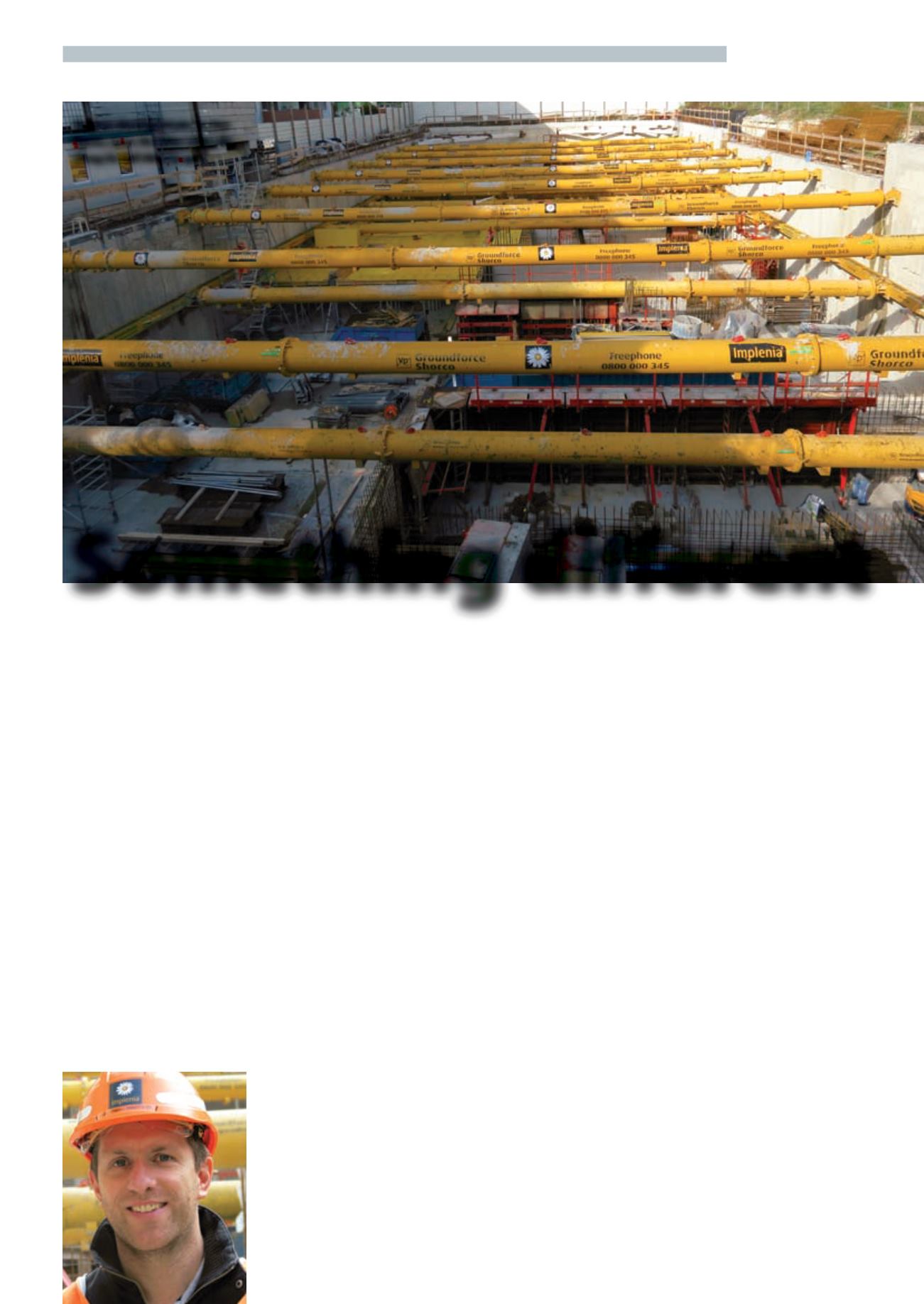
53
CONSTRUCTION EUROPE
DECEMBER 2013-JANUARY 2014
EQUIPMENT
An unassuming apartment block project on the outskirts of Geneva is
helping UK rental company Groundforce introduce its hydraulic shoring
technology to the European market.
Murray Pollok
reports from Switzerland
T
he private apartment
block under construction
at Chêne-Bourg in the
suburbs of Geneva, Switzerland,
will not – by the time the first
residents have moved in by late
2014 – appear any different from
the many others surrounding it.
If unremarkable in appearance,
what does single it out as
something a bit different is the
technique used to shore up
the deep excavation during
construction – a set of 16
hydraulic shoring struts in two
layers stretching across the 26m
wide site.
These massive struts – 0.61m
in diameter on the bottom layer
and 0.51m on the top – support
the 12m deep excavation over
its full 80m length and are being
used in place of traditional
temporary steel frame shoring.
It is the first time that Swiss-
based contractor Implenia has
used the system and also its first
application in Switzerland.
Jean-Pierre Binétruy,
geotechnical engineer and
project manager at Implenia’s
foundations division, said the
company normally favoured the
tried and tested structural steel
frames, in part because they
know how to do it that way, but
also because it already owns the
steel.
At Chêne-Bourg, however,
space is at a premium, with the
site bounded on one side by a
busy road and on one of its long
edges by an existing apartment
building. It is so cramped, in fact,
that the project offices have to be
cantilevered over the excavation.
So Implenia decided to try
out hydraulic struts, a system
that it first saw at a foundations
exhibition in Piacenza, Italy,
in 2012, where it was being
displayed by Groundworks, the
trenching equipment division of
UK rental company VP.
SUPPORT DESIGN
Groundworks, which rents an
array of trenching, shoring and
piling products as well as the
more sophisticated hydraulic
struts, worked with Implenia and
civil engineering design engineer
ESM & Fiechter Ingenieries to
come up with a design for the
project.
This comprised two sets of
eight struts, the lower struts
using Groundforce’s 250 tonne
capacity MP250 units and the
upper set comprising smaller, 125
tonne capacity MP125 units.
All 16 run in the same direction,
with spacing between each pair
to allow for lowering of formwork
and other building materials.
The struts were installed two
at a time by Implenia, starting
in mid-June, while earthworks
contractor HTP used a long-reach
Komatsu PC240LC excavator –
rented from French company
ENCO – to dig out the clay.
Binétruy said the struts would
not be appropriate for simple
excavation jobs, but in this case,
the density of the alternative
steel frame structure would have
made it life difficult.
“There are two ways of seeing
the time benefits,” he said. “For
the contractor it has saved
something like a week. And for
us, it has taken just 20% of the
time required to install a steel
frame solution,” he said.
“For safety it is much better,”
he added. “The tower crane
operator doesn’t have to think
as much as with the steel frame.
And for the client, [there is a cost
saving because] we don’t need
to use vertical support beams
for a steel frame, and don’t need
reinforcement of the concrete
base slab.”
For David Williams, managing
director of VP’s Groundforce
division, the Geneva contract
is another step towards his
vision of introducing hydraulic
strut shoring technology to the
mainland European market,
substituting the temporary
steel frame solutions that are so
prevalent there, and particularly
in Germany.
ce
Something different
Jean-Pierre Binétruy, project
manager at Implenia’s
foundations division
Sixteen shoring struts, in two
layers, span the 26mwide site
along its full 80m length


